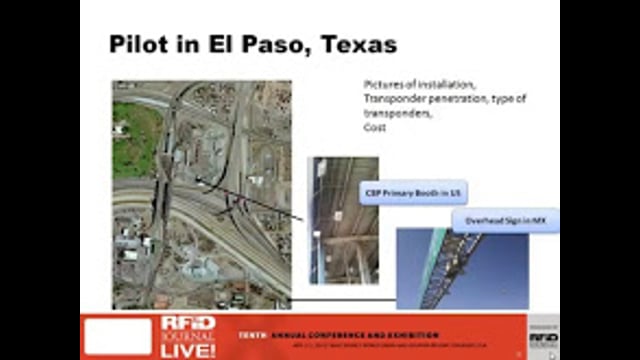To better measure traffic flow, the Texas Transportation Institute and a private research-and-development organization have installed a solution that reads government-issued passive UHF tags attached to the windshields of northbound commercial traffic. Between 50 and 80 percent of trucks passing through the borders are equipped with some type of RFID transponder, and the use of those existing transponders for tracking traffic movement across the border enables the agencies to measure and store data about crossing times for commercial vehicles. Before the RFID-based solution was put in place, the U.S. Customs and Border Protection (CBP) depended on anecdotal reports from drivers regarding wait times, as well as on visual inspections conducted by officers regarding queue lengths. Learn how truck drivers’ existing transponders attached to their windshields for toll-payment or shipment-clearance identification are being utilized to ease the inspection process. This process does not include tracking individuals, but simply collecting an ID number and a timestamp as a transponder passes a reader location. Hear how the data is being used to help border-crossing agencies to strategize traffic solutions, such as opening extra lanes at specific times.
Speaker:
Rajat Rajbhandari, Ph.D., P.E., PMP, Research Engineer, Texas Transportation Institute

